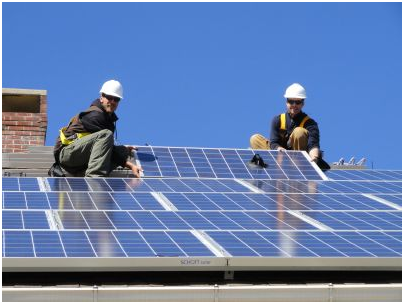Solar power has been using as an alternative energy source and the platform has been getting many developments in recent days. Latest developments in solar technology focus on decreasing the manufacturing costs of expensive conventional PV (Photovoltaic) panels. Recently, silicon has been using to make common types of PV panel and several variants are available such as crystalline and non-crystalline silicon.
Recently, it is has been found that a silica nano-particles coating can improve the power of PV cells. Direct integration to the solar cells can enhance the power performance by 60% in the UV range of the spectrum. The coating does this by absorbing the UV and converting a part of the energy into electrical energy. Thus, this process can take advantage of a wide range of light spectrum for generating electrical energy.

Search for alternative materials to the costly silicon for making PV panel has been ended up with the development of a PV fabrication process. It uses cadmium telluride for coating glass panels and the total costs comes less than $2 per watt. Latest cadmium telluride process enables PV panels to draw an efficiency of 11-13% and offers a vital progress in capital and labor productivity and also manufacturing efficiency. Are you looking for international courier service? Well, courierpoint is here to help you through…
Another development in solar power includes organic solar cells and thin-layer PV cells. These are less expensive and feature great potential for easy manufacturing. The technology used in them aims to decrease or replace the silicon for PV panel manufacturing. Organic solar cells make use of carbon-based polymers whereas thin-layer silicon PV uses light-trapping methods and a thinner silicon layer.
Apart from advance in solar technology, there are many ways of PV installation for energy production. Total PV energy production through PV installation in the world is 2204 megawatts. It is suggested that PV installations to use electricity generated by solar power to divide water and generate hydrogen or to recharge electrical vehicles. Other possibilities include manufacturing facilities for PV panels, which would decrease discharge of carbon dioxide from PV manufacturing.
The major advantages of solar technology include the several applications of PV installations, non-polluting usage and renewable source of energy. More developments in their design and production will draw more customers towards its ability to use for energy production. Hope new developments will be happening in the niche.



